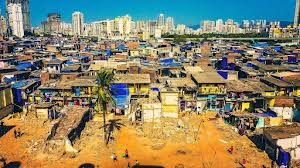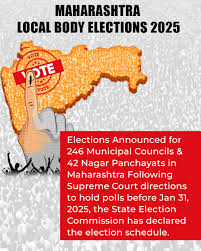
India’s Urbanization Challenge: Creating Sustainable Cities Introduction.

The country is being swept by an unprecedented wave of urbanization. More than 34% of the population already lives in urban areas in the country, and it is estimated that by 2030, 40% of Indians will be city dwellers. Such rapid urban growth brings with it opportunities and challenges that are redrawing the face of the country—societal, economic, and even political. While it can have certain advantages in terms of sustaining economic growth, innovation, and cultural dynamism, massive challenges are presented in the arena of infrastructure, housing, transport, waste management, and environmental sustainability. Creating sustainable cities that would house India’s fast-growing urban population is indeed one of the biggest challenges before India.
1. Infrastructure Deficit and Urban Sprawl: The Indians are under heavy pressure in terms of urban infrastructure. Most cities have inadequate roads, non-reliable public transportation, deficient water supply, and obsolescent sewage systems. Pressure from urban sprawl—with unplanned, low-density developments on the edges of towns—only adds to these problems by increasing the difficulty of delivering all these services efficiently. Traffic Congestion and Transportation Issues Indian cities have earned a reputation for traffic congestion. Due to a surge in private vehicle ownership, city roads like Bengaluru, Mumbai, and Delhi are choked with cars, making for longer travel times and increases in fuel consumption and air pollution. Public transportation systems also tend to be overcrowded, grossly underfinanced, and highly inefficient, leading residents to take to private vehicles.
2. Shortage of Water and Proper Sanitation: The water supply systems in Indian cities are under immense pressure due to old and decaying infrastructure, leakages, and contamination. Cities like Chennai, Bengaluru, and Hyderabad face an acute shortage of water and have to rely upon private tankers to meet the day-to-day needs of their residents. Poor sanitation and inadequate infrastructure for management of waste add to pollution and health hazards, particularly in low-income groups.This has created a high demand for low-cost housing. However, most cities in India have a severe shortage of affordable and adequate housing. This has led to the mushrooming of slums and informal settlements housing nearly one-third of urban residents in India.
3. Proliferation of Slums: On the contrary, cities like Mumbai, Delhi, and Kolkata have unimaginable populations living in slums. Its people reside in extremely small spaces for living, devoid of basic amenities necessary for any human being, such as pure water, sanitation, and electricity. Insecurity of tenure, health hazards, and limited economic opportunities generally persist among slum dwellers.A reason for a lack of decent affordable housing options is brought about by the skyrocketing prices of real estate induced by speculative investments, regulatory bottlenecks, and high land acquisition costs. Consequently, the middle and lower classes cannot access decent housing; this, in return, increases inequality in urban areas.The element of urbanization in India often gets balanced with the factor of environmental deterioration. The urban populations go through severe air pollution, loss of green areas, water adulteration, and garbage dirt—all seriously threatening public health. Empowering Women and the Vulnerable
This could be further elaborated as: Empowerment in gender-sensitive urban planning includes safe public spaces, accessible transport, and inclusive economic policies that allow the representation of diverse groups in local governance for enhanced inclusive decision-making.
4. Air Pollution: Indian cities are amongst the most polluted in the world, with Delhi, Kanpur, and Varanasi often ranking in the top of the list of worst air quality. The alarming levels of air pollution emanate from vehicular emissions, building dust, industrial effluents, and crop burning that affect millions of its residents.The Indian cities generate an estimated 62 million tons of municipal solid waste annually. This is quite likely to have gone up in the ensuing years. Most of such cities lack infrastructure or capacity for effective waste management. Their open dumping and poor segregation have been raising landfill levels and environmental contamination.
Indian cities reflect extreme social and economic inequalities. While cities open up opportunities for citizens for economic growth and gainful employment, they simultaneously generate conditions of urban poverty, unemployment, and absence of access to civic services.
5. Urban Poverty and Informal Employment: A large number of the urban populations are found in the informal sectors; their jobs are either lowly paid, insecure, and also lack social security. Examples of informal sector workers include street vendors, daily wage laborers, and domestic workers; they form the backbone of urban economies, yet they are normally excluded in social and economic planning.Most cities fall short in terms of unequal delivery of basic services such as health, education, and public transport. Large sections of the marginalized do not have adequate access to these services. This kind of exclusionary growth further accentuates urban poverty and inequality.Given this set of challenges, India has no option but to adopt a holistic, integrated, and eco-friendly approach to urban development. Strategies that would help create sustainable cities.
6. Strengthening Urban Governance and Planning: Strong urban governance is a significant determinant of sustainable city development. The cities need rational planning frameworks, which will be aligned with land use, transportation, housing, and environmental management.
This therefore calls for incorporating planning policies aimed at mixed-use building development, high-density centers, and effective land use that increase efficiency. This would redress urban sprawl and add to the walkability and accessibility of public services. Of importance too, in effect, is ecological balance regarding green spaces, water bodies, and other natural resources in physical planning.Strengthening local governance through empowered municipal bodies is, therefore, crucial to addressing city-specific issues. Decentralization can ensure more responsive and accountable governance, allowing cities to adapt solutions to local needs. Innovative solutions for sustainable urbanization can be championed by empowered local governments.
7. Development of Sustainable Infrastructure: One of the essential keys toward making cities more livable, resilient, and environmentally friendly will be the building of sustainable infrastructure. Expansion and modernization of public transport systems—metros, buses, and non-motorized transport such as cycling and pedestrian pathways—help reduce congestion and lower pollution, besides encouraging sustainable mobility. Delhi, Kolkata, and Bengaluru have expanded their metro systems, but much more is required to be done to connect the peripheral areas and reduce dependence on private vehicles.It is the intelligent infrastructure—smart grids, intelligent water management systems, and energy-efficient buildings—that can optimize resources to give the best quality of life. The “Smart Cities Mission” launched by the Government of India proposes to redevelop 100 cities with intelligent infrastructure. Progress has been uneven so far, with a number of funding and implementation challenges yet to be resolved.
8. Promoting Affordable Housing and Inclusive Development: There is a need for policies to be formulated regarding low-income and affordable housing in India if the goal of addressing housing shortages and preventing the rise of slums is to be met. Public-private partnership for affordable housing development, fast-tracking the process of land acquisition, and changes in the regulatory regime-areas such as these are directly related to the government. Similarly, other programs that aim to provide affordable housing options for the urban poor include the Pradhan Mantri Awas Yojana, though specific land availability, financing issues, and regulatory obstacles are impediments to proper implementation.They should regularize and upgrade informal settlements, giving them secure tenure, minimum services, and assured better living conditions. The Slum Rehabilitation Authority of Mumbai is a good example of community-based redevelopment models.
9. Environmental Sustainability: Environmental sustainability should be the guiding principle in the urban development policy. Tax benefits, supportive regulations, and publicity could help in the promotion of some green building practices, such as energy-efficient construction, rainwater harvesting, and sustainable material usage. There is huge potential in making urban development have a minimum ecological footprint through various sustainable practices. Therefore, cities should invest in waste management infrastructure that assures segregation at source, efficient collection systems, and strong recycling practices. Community involvement in the processes of waste management, along with technological innovations in waste-to-energy plants, can reduce filling up landfills and environmental contamination.
10. Improving Air Quality Management: Improvement in air quality should be approached by strict enforcement of emissions standards, promotion of clean sources of energy, enhancement and improvement of public transport, and encouragement of green cover in cities. Urban forests, green belts, and rooftop gardens can mitigate air pollution and reduce the urban heat island effect.Sustainable cities need to be inclusive. All their citizens should have equal opportunities for economic opportunities, public services, and decision-making processes. As such, urban policies need to be designed in a way that incorporates slum dwellers, migrants, and informal sector workers into the processes of policymaking and development. Social safety nets play an important role in creating affordable healthcare, education, and housing to lessen poverty and inequality within urban centers.



